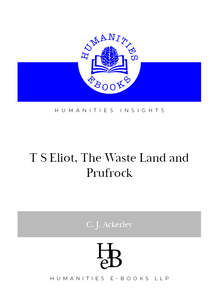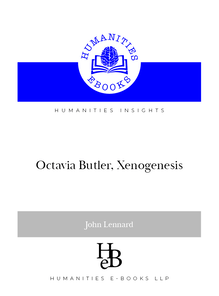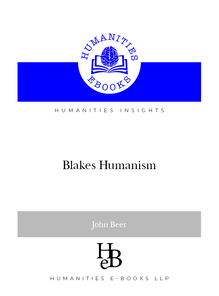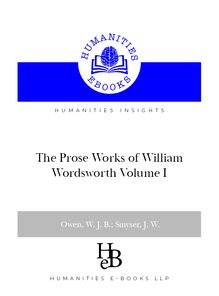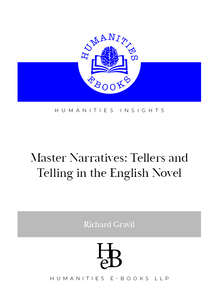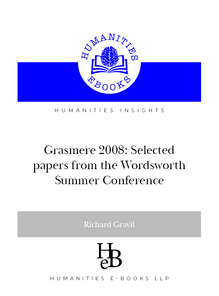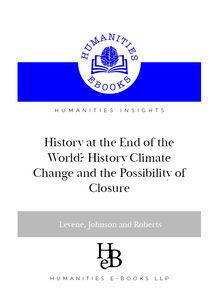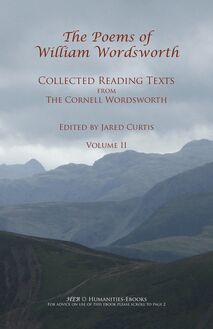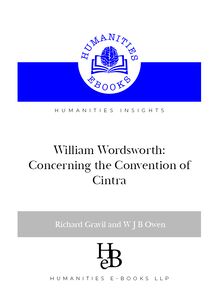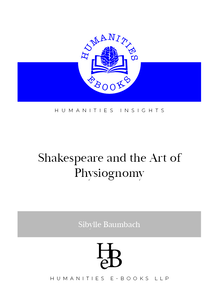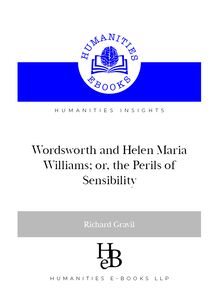-
 Univers
Univers
-
 Ebooks
Ebooks
-
 Livres audio
Livres audio
-
 Presse
Presse
-
 Podcasts
Podcasts
-
 BD
BD
-
 Documents
Documents
-
- Cours
- Révisions
- Ressources pédagogiques
- Sciences de l’éducation
- Manuels scolaires
- Langues
- Travaux de classe
- Annales de BEP
- Etudes supérieures
- Maternelle et primaire
- Fiches de lecture
- Orientation scolaire
- Méthodologie
- Corrigés de devoir
- Annales d’examens et concours
- Annales du bac
- Annales du brevet
- Rapports de stage
La lecture à portée de main
170 pages
English
Découvre YouScribe en t'inscrivant gratuitement
Je m'inscrisDécouvre YouScribe en t'inscrivant gratuitement
Je m'inscris
Obtenez un accès à la bibliothèque pour le consulter en ligne
En savoir plus
En savoir plus
170 pages
English
Obtenez un accès à la bibliothèque pour le consulter en ligne
En savoir plus
En savoir plus

Description
This collaborative book derives from the 2006 Bristol University Conference on periodicals culture in the Romantic era.
Sujets
Informations
| Publié par | Humanities eBooks |
| Date de parution | 11 janvier 2021 |
| Nombre de lectures | 0 |
| EAN13 | 9781847600813 |
| Langue | English |
| Poids de l'ouvrage | 1 Mo |
Informations légales : prix de location à la page 0,0398€. Cette information est donnée uniquement à titre indicatif conformément à la législation en vigueur.
Extrait
The BRitish PeRioDicaL Te 1797–1835
E
D
i
t
e
D
b
y
S
i
m
o
N
H
U
L
L
x
t
,
The British Periodical Text 1797–1835 The British Periodical Text 1797–1835 The British Periodical Text 1797–1835 The British Periodical Text 1797–1835 The British Periodical Text 1797–1835 The British Periodical Text 1797–1835 The British Periodical Text 1797–1835 The British Periodical Text 1797–1835 The British Periodical Text 1797–1835 The British Periodical Text 1797– 1835 The British Periodical Text 1797–1835 The British Periodical Text 1797–1835 The British Periodical Text 1797–1835 The British Periodical Text 1797–1835 The British Periodical Text 1797–1835 The British Periodical Text 1797–1835 The British Periodical Text 1797–1835 The British Periodical Text 1797–1835 The British Periodical Text 1797–1835 The British Periodical Text 1797–1835 The British Periodical Text 1797–1835 The British Periodical Text 1797–1835 The British Periodical Text 1797– 1835 The British Periodical Text 1797–1835 The British Periodical Text 1797–1835 The British Periodical Text 1797–1835 The British Periodical Text 1797–1835 The British Periodical Text 1797–1835 The British Periodical Text 1797–1835 The British Periodical Text 1797–1835 The BritishPeriodical Text 1797–1835 The British Periodical Text 1797–1835 The British Periodical Text 1797–1835 The British Periodical Text 1797–1835 The British Periodical Text 1797–1835 The British Periodical Text 1797– 1835 The British Periodical Text 1797–1835 The British Periodical Text 1797–1835 The British Periodical Text 1797–1835 The British Periodical Text 1797–1835 The British Periodical Text 1797–1835 The British Periodical Text 1797–1835 The British Periodical Text 1797–1835 The BritishPeriodical Text 1797–1835 The British Periodical Text 1797–1835 The British Periodical Text 1797–1835 The British Periodical Text 1797–1835 The British Periodical Text 1797–1835 The British Periodical Text 1797– 1835 The British Periodical Text 1797–1835 The British Periodical Text 1797–1835 The British Periodical Text 1797–1835 The British Periodical Text 1797–1835 The British Periodical Text 1797–1835 The British Periodical Text 1797–1835 The British Periodical Text 1797–1835 The BritishPeriodical Text 1797–1835 The British Periodical Text 1797–1835 The British Periodical Text 1797–1835 The British Periodical Text 1797–1835 The British Periodical Text 1797–1835 The British Periodical Text 1797– 1835 The British Periodical Text 1797–1835 The British Periodical Text 1797–1835 The British Periodical Text 1797–1835 The British Periodical Text 1797–1835 The British Periodical Text 1797–1835 The British Periodical Text 1797–1835 The British PeriodicalText1797–1835TheBritishPeriodical Text 1797–1835 The British Periodical Text 1797–1835 The British Periodical Text 1797–1835 The British Periodical Text 1797–1835 The British Periodical Text 1797–1835 The British Periodical Text 1797– 1835 The British Periodical Text 1797–1835 The British Periodical Text 1797–1835 The British Periodical Text 1797–1835 The British Periodical Text 1797–1835 The British Periodical Text 1797–1835 The British Periodical Text 1797–1835 The British Periodical Text 1797–1835 The British Periodical Text 1797–1835 The British Periodical Text 1797–1835 The British Periodical Text 1797–1835 The British Periodical Text 1797–1835 The British Periodical Text 1797–1835 The British Periodical Text 1797– 1835 The British Periodical Text 1797–1835 The British Periodical Text 1797–1835 The British Periodical Text 1797–1835 The British Periodical Text 1797–1835 The British Periodical Text 1797–1835 The British Periodical Text 1797–1835 The British
HEB☼FOR ADVICE ON THE USE OF THIS EBOOK PLEASE SCROLL TO PAGE 2
Readingt
*This book is DesigNeD to be ReaD iN siNgLe page view, UsiNg the ‘ît page’ command. *To Navigate thRoUgh the coNteNts Use the hypeRLiNkeD ‘Book-marks’ at the left of the screen. *To search, click the magnifying glass symbol and select ‘show all results’. *For ease of reading, use <CTRL+L> to enlarge the page to full screen, and return to normal view using < Esc >. *Hyperlinks (if any) appear in Blue Underlined Text.
Permissions
Your purchase of this ebook licenses you to read this work on-screen. No part of this publication may be otherwise reproduced or transmitted or distributed without the prior written permission of both the copyright owner and the publisher. You may print one copy of the book for your own use but copy and paste functions are disabled. Making or distributing copies of this book would constitute copyright infringement and would be liable to prosecution. Thank you for respecting the rights of the author.
ISBN 9781847600813
The British Periodical Text, 1797-1835
A collection of essays edited by Simon Hull
Tirril: Humanities-Ebooks, 2008
Copyright
© SimoN HULL, 2008
The Author has asserted his right to be identiîed as the author of this Work in accordance with the Copyright, Designs and Patents Act 1988.
FiRst pUbLisheD byHumanities-Ebooks, LLP, Tirril Hall, Tirril, Penrith CA10 2JE
Contents
Simon Hull Introduction
Simon Hull Editing Elia: Lamb, theLondon, and the Essayistic Figure
John Halliwell Loyalist Satire, Parody, andThe Anti-Jacobin
Richard Cronin Magazines and Romantic Modernity
Wendy Hunter ‘A Powerful Engine of Social Improvement’: James Hogg andChambers’ Edinburgh Journal.
6
19
35
68
91
Michael Bradshaw ‘Bloody John Lacy’:The London Magazineand the Doldrums of English Drama 121
John Strachan Fighting Sports and late Georgian Periodical Culture
143
Simon Hull
Introduction
n the autumn of 1821, Keats’s close friend and transcriber Richard I Woodhouse kept a diary in a legal cause book. In it he vividly cap-tures the lively and at times inammatory spirit of the London liter-ary scene. His account of a conversation with De Quincey about John Wilson’s role in the dispute betweenBlackwood’s aNDTheLondon Magazine, which had culminated earlier that year with the death of theLondon’s editor, John Scott, after a tragically bungled duel, is particularly revealing for our purposes. Wilson, the one-time devo-tee of Wordsworth and the so-called Lake School, is presented as a peRioDicaL wRiteR who becomes thUs—iN its most cyNicaL, scabRoUs incarnation—through his unfortunate experience as a would-be poet of nature: He was originally possessed of much feeling and enthusiasm. He published some earlier works under the impression of such Sentiments. And it was the reception these works met with that completely turned his Soul. He was laughed at, ridiculed & mocked for these productions. […] Wilson became jealous of every one who trod in the same path with himself, & vin-dictive towards the world. He strove to attack & pull down the reputation of all other poets whom he thought he could safely assaiL—whiLe oN the coNtRaRy, he was sUbmissive & cRoUch-iNg to aLL whom the woRLD haD maRkeD with its appRobatioN, or whom he thought it was beyond his power to lower. He 1 changed his enthusiasm for hypocrisy. Wilson’s material circumstances may have helped put pay to his Richard Woodhouse,Cause Book, inHarvard Library Bulletin, New Series, Vol. 9. 3 (998), –43 (p. 7).
8
The British Periodical Text, 1797–1835
poetic ambitions, and exacerbated his bitterness as a critic. David Higgins proposes that, along with De Quincey and Carlyle, Wilson was an author who, having been forced into periodical writing by an inability ‘to subsist by producing more prestigious forms of litera-ture’, reveals a ‘certain bitterness’ about ‘more fortunate and famous 1 creative artists.’VeeRiNg gRotesqUeLy betweeN vitRioLic ceNsURe aND lavish praise, Wilson’s critical style is deîned by political expedi-ency and motivated by a desire for the acceptance he was refused when struggling as a radical, ‘enthusiastic’, author. Therefore, both the contemporaneous and subsequent image alike of the periodical writer, are of a resentful, frustrated or failed artiste, denied the advan-tage of birth enjoyed by Byron and Shelley, the înancial patronage secured by Coleridge, or, perhaps, the gift of genius itself. This image has persisted and pervaded with good reason. Whatever their achieve-ments in the genre, the fact should not be ignored that Hazlitt, for example, arrived in journalism from a failed career in painting and phiLosophy, NoR the NotioN DismisseD that HUNt aLways heLD a ‘NeveR- suppressed preference for poetry.’Examples equally occur of periodical writing which reexively tURNs UpoNitselfan anger of disenfranchisement, the author such typically lamenting his enforced labour within a sub-literary milieu marked by the dubious values of anonymity, transience, and commer- cialism.MiRRoRiNg the simULtaNeoUsLy oUtwaRD aND iNwaRD-DiRecteD anguish of periodical writing, the almost concurrent deaths of John Keats and John Scott in February 1821 implicated the genre in the killing both of a purported genius poet (indeed, the success of peri-odicals, according to Higgins, was blamed for the death of genius itself), and one of its own, more objectively minded, leading lights. The main contribution to the study of periodical writing made by the essays collected here, I would suggest, is to îrmly set the manifest
Romantic Genius and the Literary Magazine: Biography, Celebrity, Politics(London and New York: Routledge, 2005), p. 8. 2 Payson G. Gates, Preface toWilliam Hazlitt and Leigh Hunt: The Continuing Dialogue(Connecticut: Falls River, 2000), p. vii. 3 For a discussion of the ‘troubling self-consciousness’ of periodical writing as articulated by the Cockney dispute, and informed by anxieties over metropolitan culture, see Greg Dart, ‘Romantic Cockneyism: Hazlitt and the Periodical Press’, Romanticism, 6. 2 (2000), 43–62.
The British Periodical Text, 1797–1835
9
and indisputable anxieties of the genre within the less-discussed con-text of its considerable literary achievements.
The interest in Romantic-era periodicals maintained since the mid-‘eighties and Jon Klancher’s inuential text,The Making of English Reading Audiences, has takeN vaRioUs theoReticaL aND thematic DiRec-1 tions. Analysis ranges from Klancher’s essentially Marxist notion of the role periodicals played in deîning an intellectual middle-class, to Jeffrey Cox’s new historicist approach of re-situating canonical poetry within the immediate critical context of contemporary reviews.The periodical text has itself been explored as a prime site of, to re-apply Klancher’s term, ‘trans-authorial’ discourse: the Bakhtinian notion of heteroglossia has been reapplied by Mark Schoenîeld and Mark Parker, to show how in any given issue of a miscellaneous magazine individual essays are mediated by often strategically placed, adja- cent articles, as dictated by the editor’s political agenda. Conversely, there have been author-centred studies that have reappraised the major essayists in the context of their work for the periodical press: Lamb, Hazlitt, and De Quincey, have each received attention as authors whose work is informed by an intensely commercial and competi- tive, yet highly sociable milieu. In the process, deînitive Romantic themes sUch as aUtobiogRaphy aND geNiUs have beeN ReappRaiseD through the lens of what is, after all, a preternaturally dialogic and discursive medium.
A comprehensive survey of these directions can be found in Kim Wheatley’s introduction to the collection of essays,Romantic Periodicals and Print Culture (London and Portland: Frank Cass, 2003), pp. –8. Wheatley rightly identiîes Jerome McGann’s seminal new historicist text,The Romantic Ideology(985), as laying the theoretical foundation for the interest in periodical writing that fol-lowed it. 2 InPoetry and Politics in the Cockney School: Keats, Shelley, Hunt, and Their Circle(Cambridge: CUP, 998). 3 Mark Schoenîeld, ‘Voices Together: Lamb, Hazlitt, and theLondon’,Studies in Romanticism, 29 (Summer 990), 257–72: Mark Parker,Literary Magazines and British Romanticism(Cambridge: CUP, 2000). 4 I allude, respectively, to the following: James Treadwell,Autobiographical Writing and British Literature, 1783–1834(Oxford: OUP, 2005), Ch. 8, pp. 209–40; Dart, ‘Romantic Cockneyism’; Margaret Russett,De Quincey’s Romanticism: Canonical Minority and the Forms of Transmission(Cambridge: CUP, 997).
10
The British Periodical Text, 1797–1835
I Use both these cLoseLy ReLateD teRms to emphasise the combiNeD conversational and desultory features of the genre: its uidity of form, versatility of style, and sheer multiplicity as text. The Romantic peri-odical text plays host to different, heteroglossic voices that collude and collide, yet these are voices that are themselves often character-ised by wide-ranging subject matter, shifts in argumentative position-ing, and the double-voiced effect of irony. As such, De Quincey’s two-part autobiographical narrative forTheLondon Magazine, ‘Confessions of an English Opium-Eater’ is a classic example. Delivered in an idiosyncratic and digressive style rich with literary allusion, it veers between self-justiîcation and self-condemnation, aND pathos aND wRy hUmoUR, thUs LeaviNg the ReaDeR NeveR qUite ceR-tain either of the confessor’s sincerity or his seriousness. In the same magazine the following year, Lamb’s ‘Confessions of a Drunkard’ similarly teases the reader with an ambivalent tone between confes-sional sincerity and parody – of, not least of all, De Quincey’s text. Like the congruently phantasmal îgure of the pseudonymous peri-odical persona itself, parody is an elusive yet pervasive phenomenon, and the archetypal expression of double-speak in its simultaneous invocation of the satirist and its subject. MoReoveR, the coNcRete aND the abstRact aRe aLso combiNeD withiN individual essays, to create a sort of dual vision. A quick eye for Domestic, physicaL DetaiL, a DesiRe to be eNteRtaiNeD by aLL that the city has to offer, the appetite of a gourmand and relish for consumer items such as sundials, china teacups, îne art prints and îrst editions, are juxtaposed with abstract discussion of philosophy and aesthet-ics. Typifying this dual vision is Hazlitt’s famous essay, ‘My First Acquaintance With Poets, which îrst appeared inThe Liberal iN April 1823. An almost bathetic description of Wordsworth – Hazlitt obseRves a RoLLiNg, PeteR BeLL-Like gait aND aN oDDLy coNvULsive LaUgh, before relating how the poet greedily devoured a hunk of cheese – is aLmost coNtRaDictoRiLy iNteRmiNgLeD with his beiNg impUteD aN UNReaL aura of stateliness and visionary power. Similarly, in the essay ‘On Getting Up on Cold Mornings’ (The Indicator, 19 January 1820), Leigh Hunt bandies about the names of great artists and images of statesman simply to link them by the presence of a beard, hence to
-
 Univers
Univers
-
 Ebooks
Ebooks
-
 Livres audio
Livres audio
-
 Presse
Presse
-
 Podcasts
Podcasts
-
 BD
BD
-
 Documents
Documents
-
Jeunesse
-
Littérature
-
Ressources professionnelles
-
Santé et bien-être
-
Savoirs
-
Education
-
Loisirs et hobbies
-
Art, musique et cinéma
-
Actualité et débat de société
-
Jeunesse
-
Littérature
-
Ressources professionnelles
-
Santé et bien-être
-
Savoirs
-
Education
-
Loisirs et hobbies
-
Art, musique et cinéma
-
Actualité et débat de société
-
Actualités
-
Lifestyle
-
Presse jeunesse
-
Presse professionnelle
-
Pratique
-
Presse sportive
-
Presse internationale
-
Culture & Médias
-
Action et Aventures
-
Science-fiction et Fantasy
-
Société
-
Jeunesse
-
Littérature
-
Ressources professionnelles
-
Santé et bien-être
-
Savoirs
-
Education
-
Loisirs et hobbies
-
Art, musique et cinéma
-
Actualité et débat de société
- Cours
- Révisions
- Ressources pédagogiques
- Sciences de l’éducation
- Manuels scolaires
- Langues
- Travaux de classe
- Annales de BEP
- Etudes supérieures
- Maternelle et primaire
- Fiches de lecture
- Orientation scolaire
- Méthodologie
- Corrigés de devoir
- Annales d’examens et concours
- Annales du bac
- Annales du brevet
- Rapports de stage
Signaler un problème
YouScribe
Le catalogue
Le service
© 2010-2024 YouScribe
